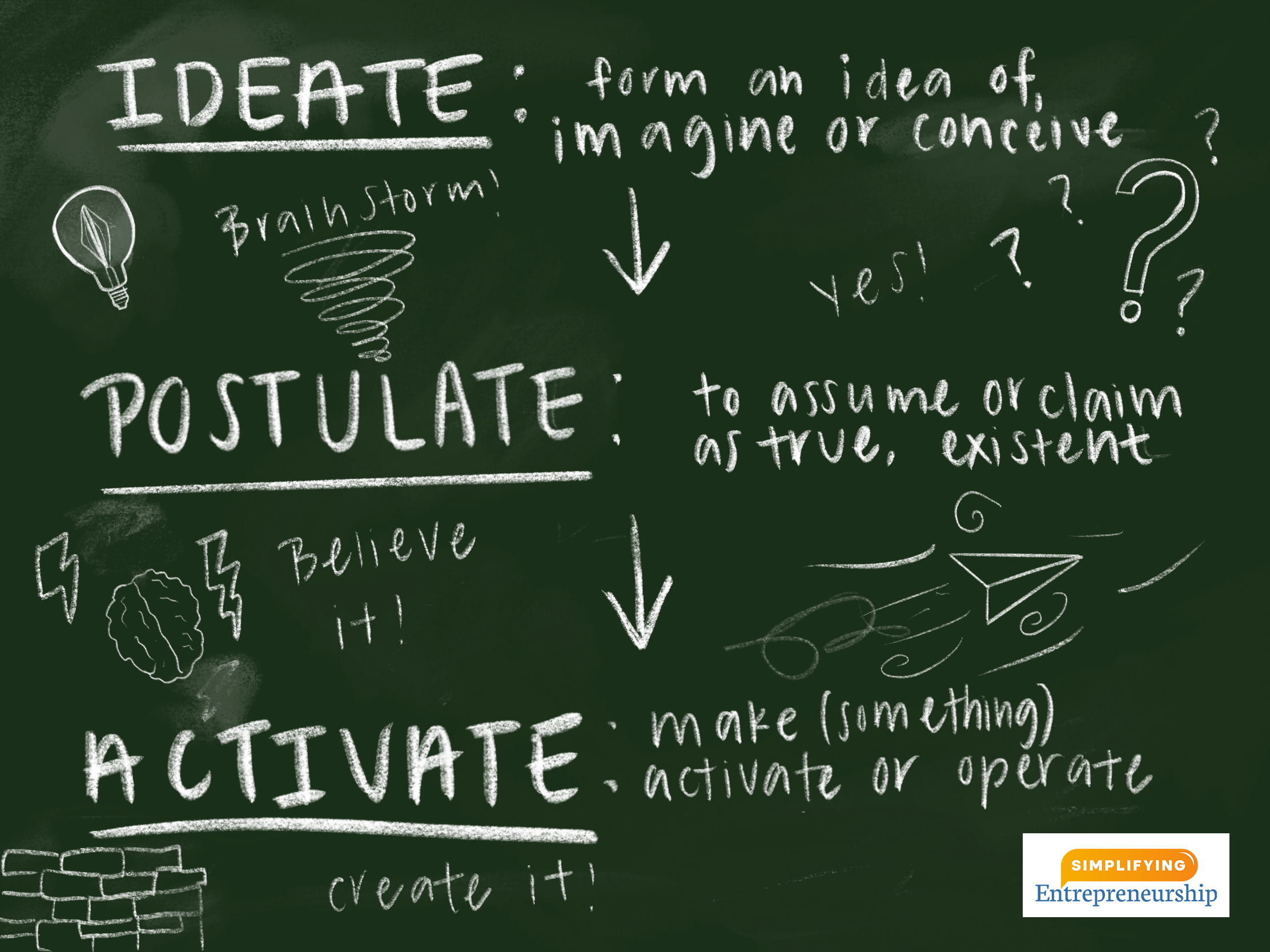Entrepreneurs are known for their ideas, and indeed, a large part of the famous “entrepreneurial mindset” is a capacity for idea generation. Yet many entrepreneurs leap straight from idea to action. While that may seem bold and brave, it can cause problems for you and your business down the line. A lack of planning prevents you from turning your ideas into reality. It’s often just a simple case of overconfidence!
That said, there’s more to planning than simply making a list or schedule. Putting an idea into action requires ideation for itself. Then, you have to work through those ideas with your team before you even think about taking the plunge.
I call this the Ideate — Postulate — Activate Model, or IPA Model for short. By following this process, you can step forward in your business with the proper amount of confidence and a well-planned approach — both of which contribute to your success.
Ideate
ideate v. form an idea of; imagine or conceive.
Have an idea? Great! Now it’s time to work through that idea. Use a whiteboard to mind-map the idea, (I like to use Coggle.it as one of my main tools for getting my ideas out). Contemplate the different aspects of the idea. Work with your team to brainstorm the idea’s variations, strategies, functionalities, and so on. After you’ve ruminated on the idea, it’s time to give it structure.
Postulate:
postulate n. to assume or claim as true, existent, or necessary
After you’ve completed your ideations, you can create a hypothesis. What do you predict for your idea, based on the information you have and what your team thinks? This is your opportunity to add structure to the idea and start figuring out how you can put it into action. As you do this, you should feel more confident in the idea.
As you work through postulations, confidence increases. However, avoid the red zone of overconfidence. That could lead you to get to Step Three too quickly.

Activate
activate v. make (something) active or operative.
Ideation and Postulation must occur before you activate. You must have a roadmap before beginning your journey. Take the time you need to get your ideas down, develop and refine a process, and gather and implement feedback. There is no right or wrong amount of time that this takes. From there, it takes that boosted confidence you’ve gained in Step Two to make your goals a reality — to activate them.
The IPA Model is a framework for the realization of your goals. However, none of this happens without clarity. Throughout the process, gather feedback and reflect, rather than bulldozing ahead. If executed properly, this IPA process will keep your team working as a cohesive unit, satisfy your customers, and keep you happy and productive.
That’s what Simplifying Entrepreneurship is all about. We help entrepreneurs with clarity, confidence, and momentum every day, with models like this, by empowering you to leverage them for your business.
For more information on my programs and podcast visit Simplifying Entrepreneurship where you can learn more.
Make it a great day!





0 Comments